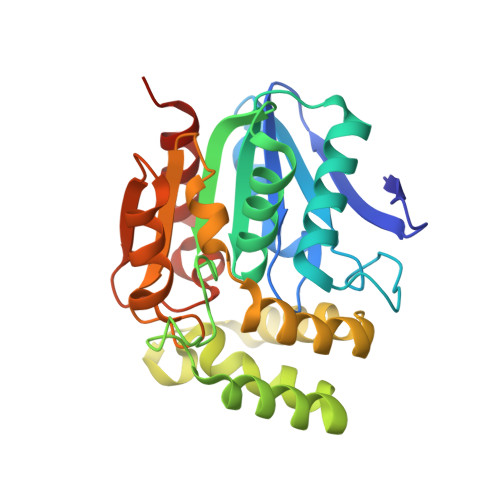Covalent bicyclization of protein complexes yields durable quaternary structures.
Hutchins, G.H., Kiehstaller, S., Poc, P., Lewis, A.H., Oh, J., Sadighi, R., Pearce, N.M., Ibrahim, M., Drienovska, I., Rijs, A.M., Neubacher, S., Hennig, S., Grossmann, T.N.(2024) Chem 10: 615-627
- PubMed: 38344167
- DOI: https://doi.org/10.1016/j.chempr.2023.10.003
- Primary Citation of Related Structures:
8PI1 - PubMed Abstract:
Proteins are essential biomolecules and central to biotechnological applications. In many cases, assembly into higher-order structures is a prerequisite for protein function. Under conditions relevant for applications, protein integrity is often challenged, resulting in disassembly, aggregation, and loss of function. The stabilization of quaternary structure has proven challenging, particularly for trimeric and higher-order complexes, given the complexity of involved inter- and intramolecular interaction networks. Here, we describe the chemical bicyclization of homotrimeric protein complexes, thereby increasing protein resistance toward thermal and chemical stress. This approach involves the structure-based selection of cross-linking sites, their variation to cysteine, and a subsequent reaction with a triselectrophilic agent to form a protein assembly with bicyclic topology. Besides overall increased stability, we observe resistance toward aggregation and greatly prolonged shelf life. This bicyclization strategy gives rise to unprecedented protein chain topologies and can enable new biotechnological and biomedical applications.
- Department of Chemistry and Pharmaceutical Sciences, Vrije Universiteit Amsterdam, 1081 HZ Amsterdam, the Netherlands.
Organizational Affiliation:


















